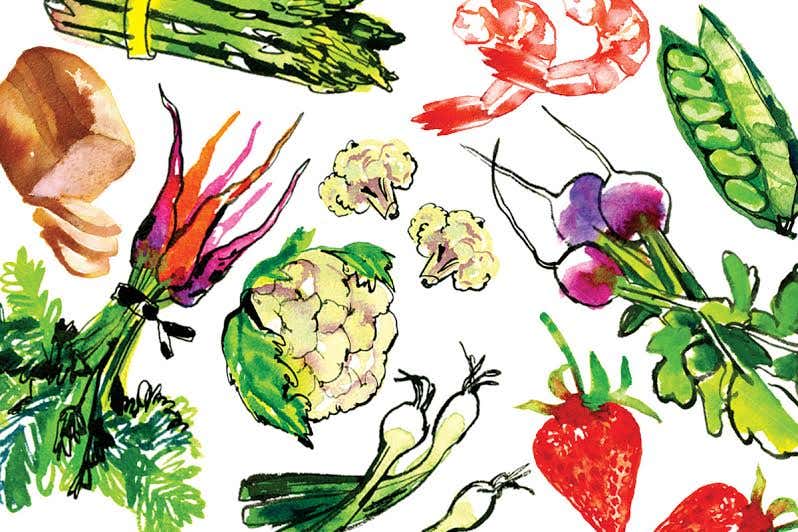
Flavors of Sicily
Bright, earthy, and suffused with the intensity of the Sicilian sun: that's how I'd describe the elements of our cuisine. Tomatoes are foremost on the list; at the end of August at Case Vecchie, my family's home in central Sicily, our kitchen counter and entire courtyard are covered with tomatoes as we cook them into sauce, dry them whole in the sun, and puree and reduce them into a sun-dried paste. These preparations will last us throughout the year, for pasta sauces, soups, and more.
Ricotta is another staple. In Sicily, sheep's milk ricotta, which is more fragrant and has a lighter texture than the cows' milk version, is used for pastries as well as pastas. You can approximate the fuller flavor of sheep's milk ricotta by adding some goat cheese to the cows' milk variety.
Olives, both black and green, may be either cured in brine or sun-dried; they've been a staple of the Sicilian table since the Greek and Roman times. We love them on their own as a snack, and we add their deep, saline flavor to sauces, breads, and more. When olive oil is very fresh, we use it on soups or as a bread dip with garlic, oregano, and sea salt.
If I had to name one herb that defined Sicilian cooking, it would be wild fennel, which grows all over the island and tastes like a cross between anise and cultivated fennel. On the coast, it's a main ingredient in our pasta con le sarde, but up in the mountains cooks prepare meatballs with wild fennel that are astonishingly good.
And then there's citrus, which grows all over Sicily and its surrounding islands: blood oranges, citronella, bergamot, and more. Lemons in Sicily are juicy, bright yellow, and not too acidic. We use the zest and the flesh itself, in everything from vegetables to desserts.
Keep Reading
Continue to Next Story










